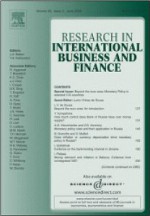From Transition Crises to Macroeconomic Stability? Lessons from a Crises Early Warning System for Eastern European and CIS Countries

This paper uses a Markov regime-switching model to assess the vulnerability of a series of Central and Eastern European countries (ie Czech Republic, Hungary, Slovak Republic) and two CIS countries (ie, Russia and Ukraine) during the period 1993–2004. For the new EU member states in Central and Eastern Europe, the results of our model show that the majority of crises in those countries can be explained by inconsistencies in the domestic policy mix and by the deterioration of macroeconomic fundamentals, as emphasised by first-generation crises models, while for the CIS countries analysed, financial vulnerability type indicators were the most relevant, that is, indicators connected with the second- and third-generation of crisis model better explain the vulnerability of these countries. Additionally, the set of indicators chosen by our model is rather heterogeneous, supporting the superiority of a country-by-country approach. Comparative Economic Studies (2006) 48, 410–434.





